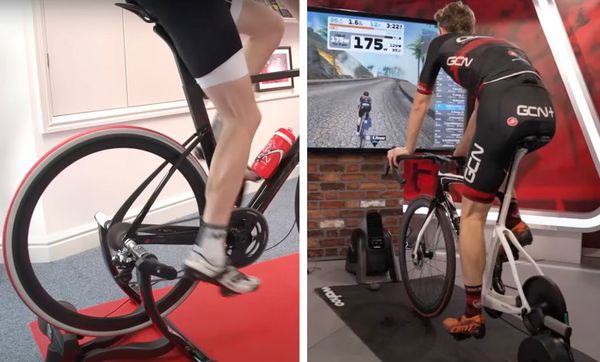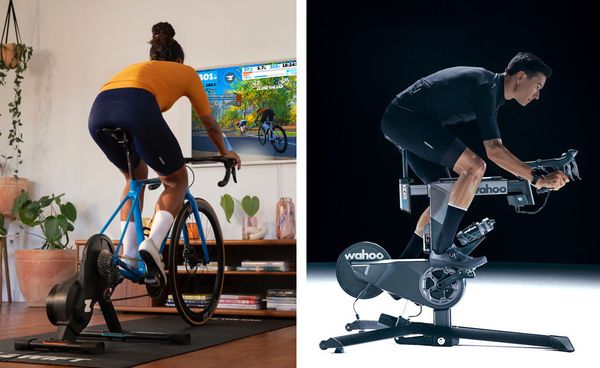The best turbo trainer workouts for time-crunched cyclists
Finding the time to fit a ride in can be tough so here are some of the most time-effective sessions to keep you on top of your training
Alex Hunt
Junior Tech Writer
Finding time to train can be a big ask at times, with the other commitments of life taking priority over training. Very quickly the time spent away from the bike can rack up and send your fitness spiralling. It’s important to remember that training is more effective when you use the principle of little yet often, rather than one big ride once a week and nothing in between.
Riding for as little as 20-30 minutes can be beneficial for your fitness and training if you are smart about what you do in this time. Fortunately for us, one of the wonders of the modern world is the rise of smart indoor training. If you really are time-poor, using a smart trainer can not only save you time but also allow for really specific training to be completed.
Here's how to use a turbo trainer to maximise the short training time you have, along with a selection of the best short workouts.
How can a smart trainer benefit me?
If you are in a position to have a dedicated indoor training area, whether that be in your garage, bedroom or kitchen, having your bike set up and ready to go will cut the prep time to almost zero. There is no need to meticulously check tyre pressures, analyse the weather and then make an informed decision on wardrobe choice before setting off. Equally, in the depths of winter, indoor riding can save the need to spend another 30 minutes cleaning your bike.
Indoor training can also be great in some situations for doubling up with other tasks. For example, being on the indoor trainer and catching up on the latest Netflix series or staying at home to look after your children are both ways that indoor training can open up more time that traditional outdoor riding does not.
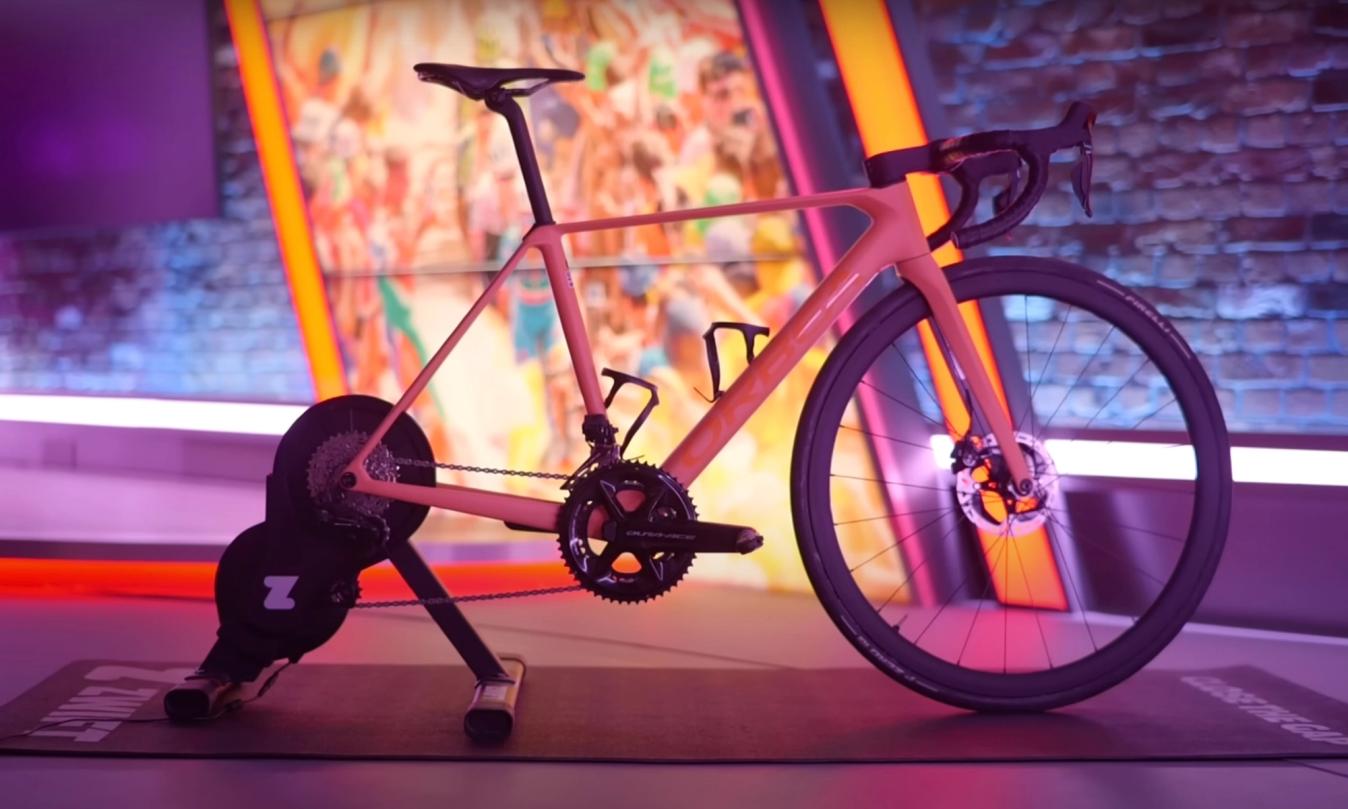
© GCN
Smart trainers really can offer the most time effective way to fit your training in
Finally, there is the actual technology that smart trainers can offer you, that will directly benefit your training. Smart trainers have a functionality called ERG mode which is a really great tool for specific training. ERG mode controls the trainer so that no matter your cadence or gear, if you are pedalling, it will hold you to your target power.
We don’t all live around perfect roads that lend themselves to training and for a lot of us taking the time to drive or ride to a good training location is once again hindered by time constraints. Using a smart trainer can mitigate the need for this and provide you with the perfect training environment immediately.
Is 30 minutes actually enough?
Alex Paton caught up with Neal Henderson of Apex Coaching to ask him what benefits you can expect from training for shorter durations of time. The outlook was surprisingly positive, with Neal explaining that "from a big-picture point of view, any activity you are able to do consistently can help you be just generally healthier".
One thing that Neal was quick to explain was not only the physical benefits of regular exercise but also the benefits to your mental wellbeing. This is something that is often overlooked, but getting in a ride of some description will boost your mental health and have you feeling more positive about yourself and your days.
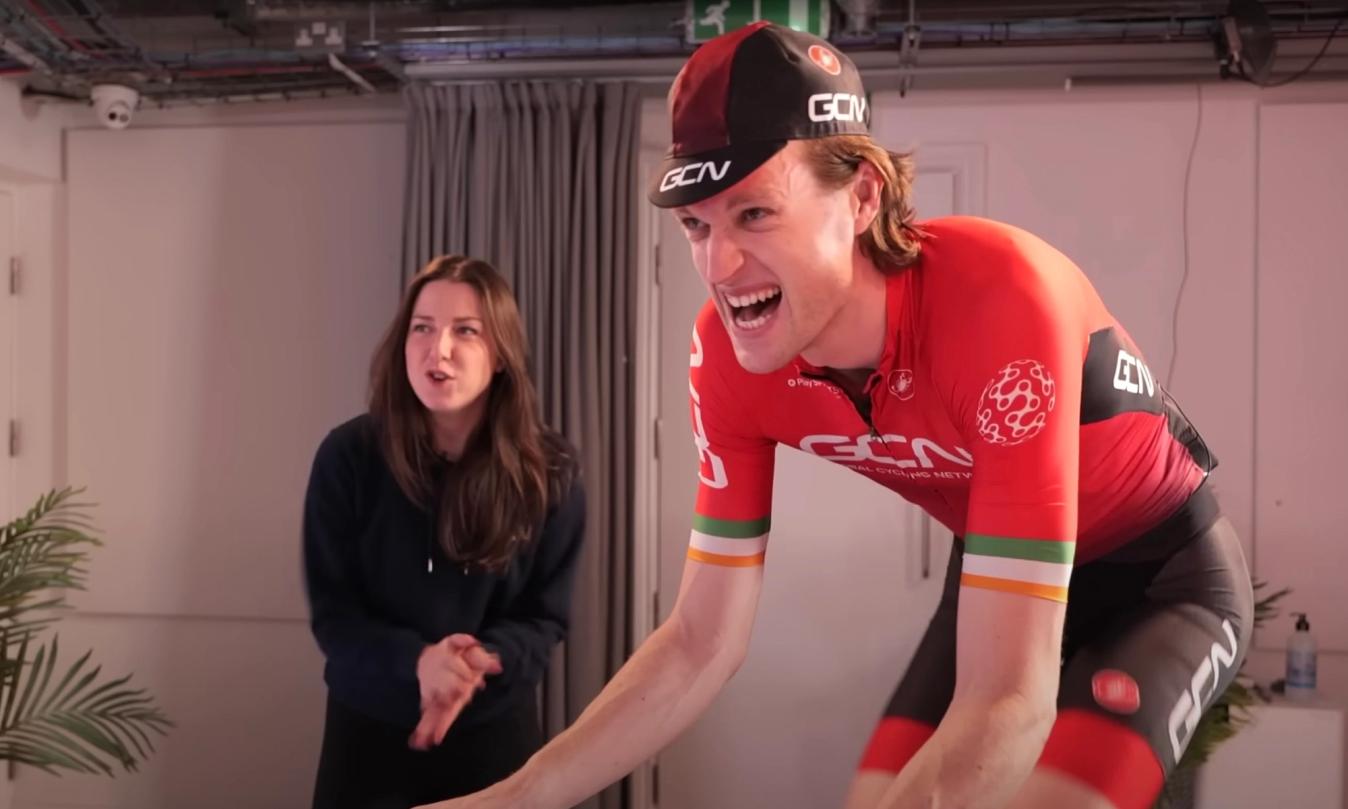
© GCN
30 minutes of purposeful riding can be more than enough to experience fitness gains
As far as training goes, will 30 minutes get you fighting fit for GC contention at the Tour de France? Absolutely not. It is about being realistic, and managing expectations and abilities within the context of the time you have.
Building a big endurance base from 30 minutes of riding a few times a week is going to be difficult, however, if you can fit one bigger ride in once a week or every 2 weeks, this will provide the correct training stresses to build an aerobic base.
The main thing to remember with a 30-minute session is to make sure it has a purpose. There isn’t enough time for any part of the ride to not serve a genuine benefit. This means incorporating some level of effort into the warm-up, whether it be a one-minute effort at FTP or a 10-second maximal sprint a few times to wake the legs up.
Neal goes on to explain that, "probably like having two days a week with that really high-intensity focus, maybe a third day is probably the limit for most folks".
Although it might feel like the right thing to do, hitting every ride as hard as you can because it is a short session will leave your body overloaded as there will not be enough time for adequate recovery between sessions.
The best indoor cycling sessions in 30 minutes
Here's our pick of the best sessions that you can do that will boost your fitness in just 30 minutes on the indoor trainer. A great feature of the indoor riding platform Zwift is that it allows you to create your own bespoke workouts that can then be used in ERG mode. This will provide you with the structure you need to just get on the bike and ride with the trainer doing the rest for you.
Best session for increasing maximal sprint power
If you are looking to really increase your kick and maximise your power delivery for those pesky town sign sprints, a great session to get you started is maximum sprint repeats.
Starting with a progressive warm-up for three to five minutes, include two sub-maximal five-second sprint efforts to get the legs firing. Once the warm-up is complete, head into the main block which will be eight maximum efforts, each 20 seconds in length. This should be in zone seven with no need to pace. Recover for three minutes in between efforts at around 65% of your FTP in a light gear with a high cadence.
Finish off with a cool down that decreases in effort to spin any accumulated lactate away from the legs.
Best for increasing VO2 max
If you are looking to increase your VO2 max for slightly longer duration intervals that are still operating above your FTP, this session will have you covered. Starting with a progressive warm-up from 65% FTP up to 100% over five minutes, spend a further minute back at 65% to spin the legs.
The bulk of the session will be based on five efforts at the upper end of zone five that last one minute in duration. These will feel progressively harder through the session but use the recovery time of three minutes to lightly pedal and regain a nice steady breathing pattern. A cool down of three minutes gradually decreasing in effort will end the session.
This is a very difficult session and should not be done after a previous day or hard training, it is important that these sessions are of good quality to really see the benefit.
Best for punchy hill climbs
Although a punchy hill climb is going to require a VO2 max effort, it is likely that it will be slightly longer in duration and will put more strain on your muscles. In order to simulate this, riding with a slightly lower cadence than normal will add some muscular strain to the session.

© GCN
Riding in a lower cadence to simulate the muscular stress of a punchy climb will be beneficial
Start with a progressive warm-up over three minutes with two sub-maximal sprints of 10 seconds in duration mixed in to wake the legs up. Once the warm-up is complete, the session is going to consist of four intervals, with three minutes in zone five and five minutes of recovery in zone one. These intervals will test your breathing and your muscular endurance ready for those short steep climbs out on the road. A good way to make it more realistic is by alternating riding in and out of the saddle within each interval.
Finish with a nice steady three-minute cool down at zone two, decreasing into zone one while riding at a high cadence.
Best sweet spot training
Sweet spot offers the most bang for your buck in terms of higher-intensity riding. Sitting at just under your functional threshold power, it will put less stress on your body than a full-on threshold session would, meaning back-to-back days can be achieved.
To warm up, start with a progressive ramp from 65% FTP all the way through to 100% over three minutes, with a further one minute at zone two. Once you are warm and ready to go you can either ride a solid time-trial-like effort for 25 minutes at 88-94% of FTP; this will test not only your physical ability but also your mental resilience too. If this feels like too much of a stretch for you, then instead try two 12.5-minute intervals of the same intensity with 90 seconds of zone two as an active recovery.
To cool down after the effort, start at sweet spot and ramp down to a nice easy finish over the remaining time.
Best for increasing FTP
Everyone and their dog wants to increase their FTP; for a lot of people, it is the go-to metric for their aerobic fitness. Building your functional threshold power can be hard work and this session should only be carried out on fresh legs and when you are feeling mentally prepared for it.
A similar warm-up to the sweet spot session will get things started with a three-minute ramp from 65% FTP up to 105% ftp with a further minute at zone two. The main bulk of the session will be based around two 10-minute efforts sitting right on your FTP. The second interval will likely feel considerably harder than the first as the fatigue sets in.
A generous recovery period of five minutes in zone one will allow both efforts to be ridden hard. Rounding off the session is a nice steady three minutes in low zone two.
Best for testing
Not only is it training that can be completed in a 30-minute ride, you can also fit in some fitness profiling too. Although a traditional 20-minute FTP test might not quite fit into the time scale, a ramp test almost certainly will. This incremental increase in power to failure gives you an estimated FTP figure and is a great way of tracking progress. Plenty of indoor training platforms including Zwift have an inbuilt ramp test session that you can complete.
- Read more: Should we all be doing ramp FTP tests?
Best all-round indoor cycling workout
Our very own GCN Training YouTube channel has a wealth of training sessions for time-crunched riders. Here you can find all sorts of workouts to follow along with, all with a specific aim to develop a certain element of your riding. Although half an hour is not a great deal of time, Manon has managed to fit in ‘a bit of everything’ into this pyramid workout session.
Best for recovering in between tough days
As we have covered earlier, not all rides can be full gas suffer-fests. Sometimes an active recovery ride is needed to better prepare your body for when the next hard session comes around. Riding at a very easy effort with a fairly high cadence will increase blood flow to your legs, promoting repair and recovery of the muscles.
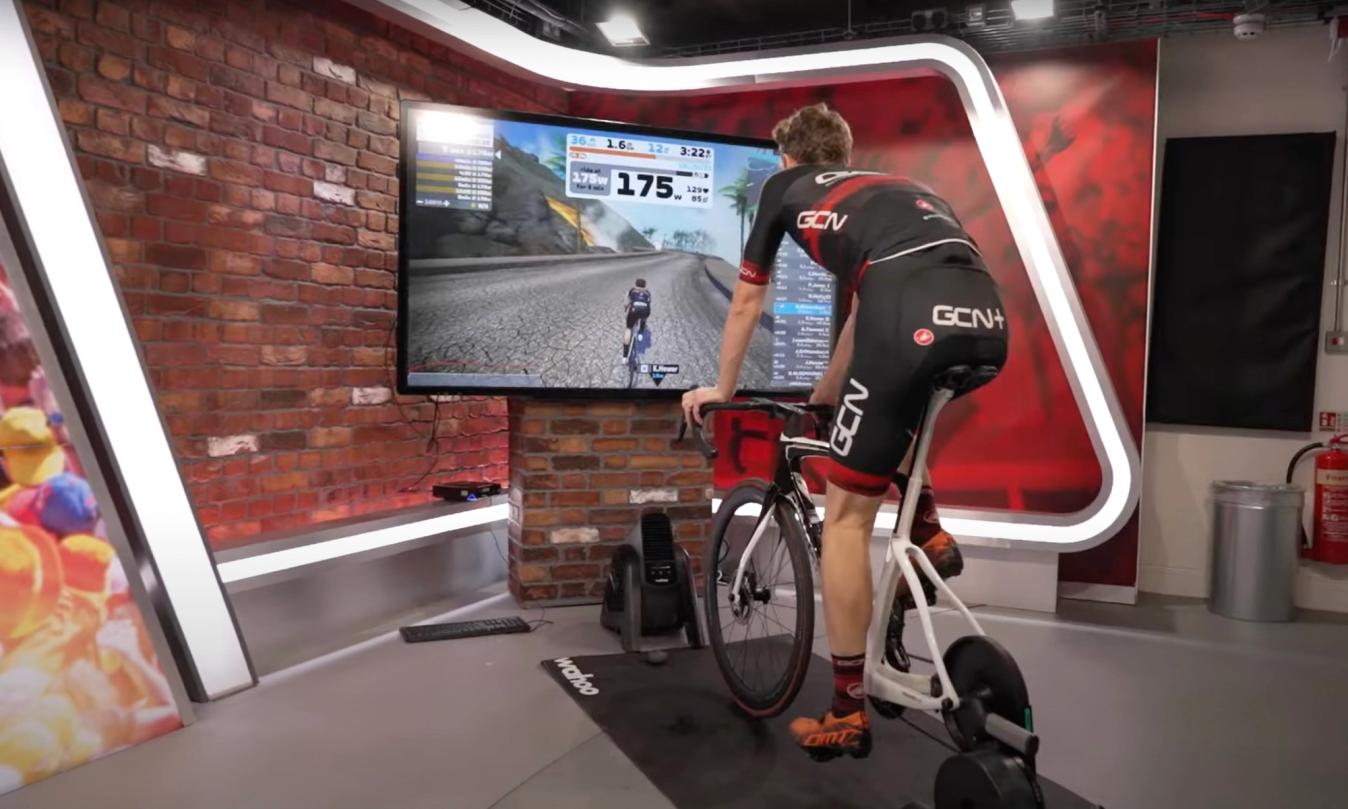
© GCN
Recovery spins are just as important as the hard sessions in order to prevent overloading your body
Although easy rides feel like the ones that make the least difference if they are avoided, they are a really important part of a rounded training programme that will keep you from overloading your body.
Best for fun
One of the best features of indoor cycling is the ability to participate in virtual races. These come in all different durations and can be raced on all different types of terrain so finding one that suits what you are looking for will not be a hard ask.
Finding a race that is at the right level for you will not only have the time flying by, but will also provide training that is high in intensity and random in its requirements. For a lot of us out there, racing also allows us to dig that little bit deeper than if we were just riding to numbers so it can be ideal for those higher-level efforts.
In conclusion
Riding for any duration is better than not riding at all, especially when you consider the potential benefits not only to your fitness but also your mental and emotional wellbeing too.
The most important thing to bear in mind when training for reduced periods of time is to manage your expectations. Are you going to be the fittest you could ever possibly be riding for a total of three hours a week? It is very unlikely, but you will be able to increase certain areas of your fitness. The hardest area to build through this style of training is going to be your base aerobic capacity, however, this can be built with a few longer rides sprinkled into a regime as and where they can fit.
Using an indoor trainer is a surefire way to minimise the total time that training will take out of your day with no need for long setup times, or the need to give your bike a big deep clean post ride. Another benefit to hold in mind too, is the ability to complete a good workout without ever needing to leave your house, which for some people could make all the difference.
More smart trainer and workout content
We have a whole load of dedicated indoor training content including a full rundown of the Wahoo indoor trainer catalogue as well as a whole section for training including advice and workouts. We have your back, whatever your fitness goals may be.
Need more indoor cycling help or inspiration? GCN's ultimate guide to indoor cycling has you covered with advice and guides on everything from turbo training tech to workouts. Check it out here.










